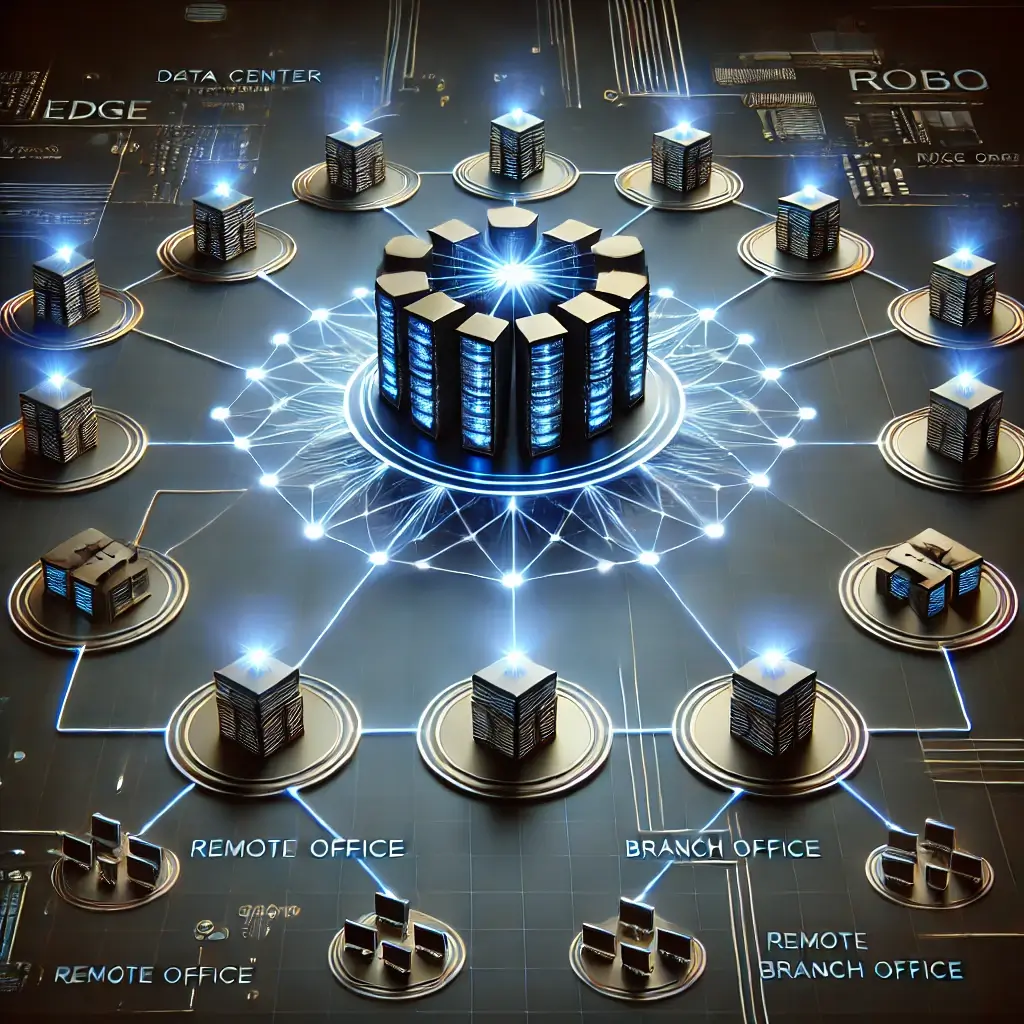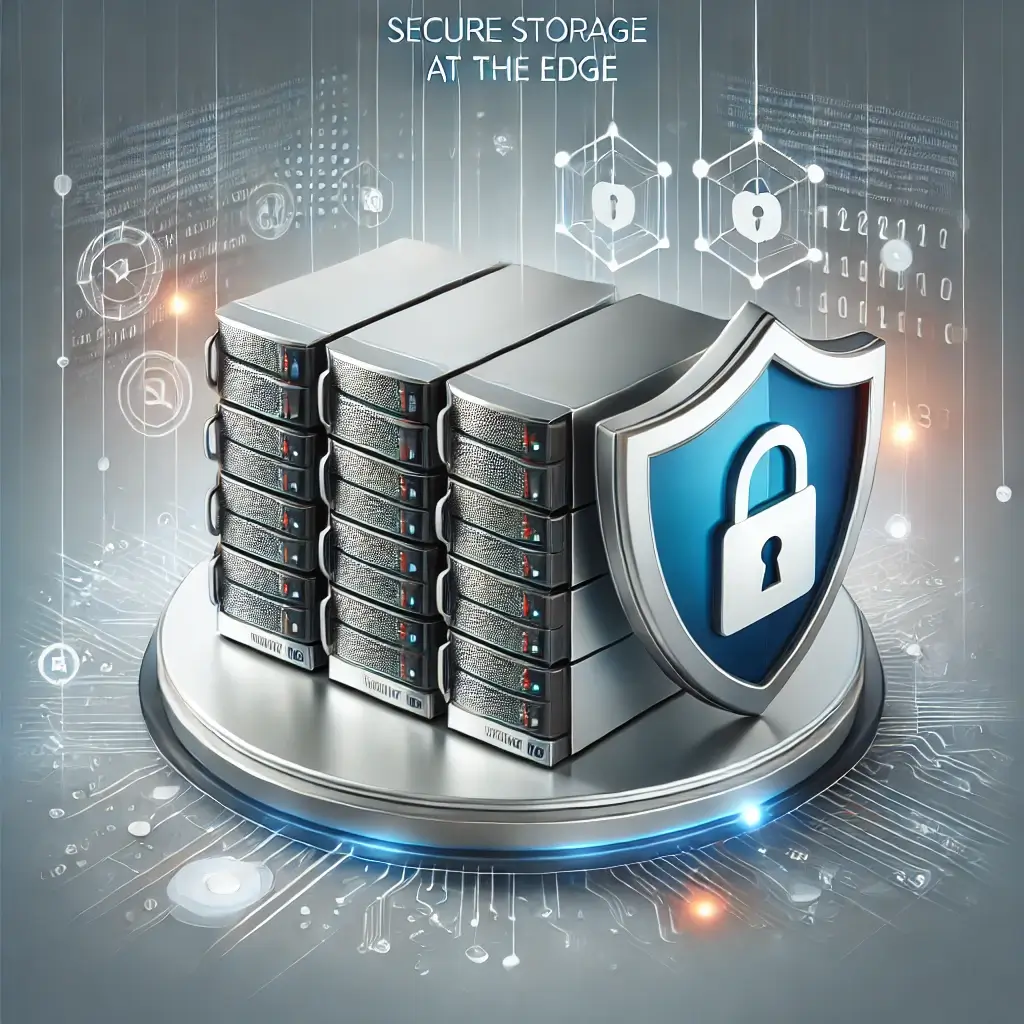Introduction to Edge Security
As businesses expand their digital footprints, data is increasingly being generated, processed, and stored at the edge—closer to where it is created. This includes scenarios like real-time monitoring in smart factories, managing patient data in healthcare facilities, optimizing traffic systems in smart cities, and enabling low-latency processing for 5G networks. From retail branches to remote energy installations, the edge is now a critical hub for data-driven operations.

One of the key challenges in this transformation is data gravity—the tendency for data to attract applications, services, and systems to the locations where it is generated. As more data resides at the edge, the need to secure it becomes critical.
Edge security ensures that data, devices, and systems at these distributed locations are protected from threats while maintaining privacy and integrity. With edge environments becoming the frontlines of data-driven operations, securing these points is paramount to ensuring operational continuity, regulatory compliance, and trust.
Key drivers for edge security include:
- The decentralization of IT environments due to ROBO setups.
- The rapid proliferation of IoT devices generating massive volumes of sensitive data.
- The need for low-latency processing and decision-making at the edge.
Edge security is not just about protecting the perimeter; it’s about safeguarding the data and infrastructure critical to powering modern, decentralized operations.
The Challenge of Securing Data at the Edge
The edge is where data is generated, processed, and acted upon in real time. However, this decentralization introduces a unique set of challenges that organizations must address to safeguard their operations:
- Distributed Attack Surfaces: The large number of edge devices creates multiple vulnerable entry points for attackers.
- Lack of Centralized Oversight: Edge environments make it difficult to enforce consistent security policies and monitor for threats effectively.
- Physical Vulnerabilities: Edge devices in remote or unsecured locations are susceptible to tampering and theft.
- Compliance and Privacy Risks: Handling sensitive data at the edge demands strict adherence to regulatory standards like NIS2 or HIPAA.
- Sophisticated Threats: Advanced attacks, such as ransomware and DDoS, target edge devices and networks, requiring proactive defenses.
Compromised edge data leads to severe consequences: operational downtime, financial loss, reputational damage, and non-compliance with stringent regulations. Organizations must rise to these challenges by adopting robust, proactive edge security strategies.
Core Aspects of Edge Security

Effective edge security hinges on addressing these critical aspects:
- Data Integrity: Ensuring that data remains accurate, unaltered, and reliable at the edge.
- Privacy Assurance: Employing encryption and secure protocols to safeguard sensitive information from unauthorized access.
- Threat Protection: Deploying real-time detection and mitigation tools to defend against malware, ransomware, and other attacks.
- Secure Access Management: Implementing robust identity and access controls to limit who can interact with edge devices and data.
By tackling these pillars, businesses can protect their edge environments against evolving threats.
Storage-Level Protection at the Edge
The cornerstone of securing data at the edge is robust protection for storage systems. Since edge environments often host sensitive and business-critical information, securing storage is vital to ensure data integrity, privacy, and resilience.
Key Strategies for Securing Edge Storage
1. Encryption by Default
- Encrypt data at rest and in transit to prevent unauthorized access, even if the storage medium or transmission channel is compromised.
2. Access Controls and Authentication
- Implement strict access management with multi-factor authentication (MFA) to ensure only authorized personnel can access stored data.
3. Audit Logs for Accountability
- Maintain detailed audit logs to track all interactions with edge storage systems, providing visibility into who accessed data, when, and how.
4. Data Integrity Checks
- Use techniques such as checksum validations to ensure stored data remains unaltered and reliable. Automatically flag discrepancies for investigation to protect against tampering.
5. Privacy by Design
- Adopt storage solutions designed with privacy in mind, ensuring that sensitive data is protected from unauthorized exposure by default.
6. Immutable Storage Options
Utilize storage systems that create unalterable backups, protecting against ransomware by making stored data resistant to encryption or deletion.
7. Scalable Backup and Recovery
- Regularly back up critical edge data to centralized or cloud systems, ensuring that data can be quickly restored in the event of loss or corruption.
Benefits of Storage-Level Protection
- Enhanced Trustworthiness: Secure, reliable storage ensures data can be used confidently for decision-making.
- Regulatory Compliance: Robust storage security measures help meet stringent data protection laws like NIS2 and HIPAA.
- Operational Continuity: Proactive defenses minimize disruptions caused by cyberattacks or system failures.
By securing edge storage with these measures, organizations can protect their most valuable asset—data—at its source while building a resilient foundation for modern edge operations.
Defending Edge Data from Attacks
Edge environments are particularly vulnerable to sophisticated attacks. To defend edge data effectively, organizations must:
- Prevent Unauthorized Access: Deploy hardened storage solutions with multi-factor authentication (MFA) and strict role-based access controls (RBAC).
- Combat Malware and Ransomware: Implement backup strategies and immutable storage that cannot be altered or encrypted by malicious actors.
- Monitor in Real-Time: Use AI and ML-powered monitoring tools to detect and respond to anomalies in edge storage systems.
These strategies ensure data security, operational continuity, and compliance with data protection standards.
How DataCore Can Help
Decentralized edge and Remote Office/Branch Office (ROBO) environments demand a robust, security-focused approach to address the challenges of distributed infrastructure. DataCore strengthens defenses at the edge, providing advanced protection against cyber threats while ensuring data integrity and privacy.
By mitigating vulnerabilities across locations and supporting secure operations with minimal on-site IT resources, DataCore enables organizations to establish a fortified and compliant security posture. This empowers businesses to confidently manage modern, decentralized environments without compromising on protection or performance.
